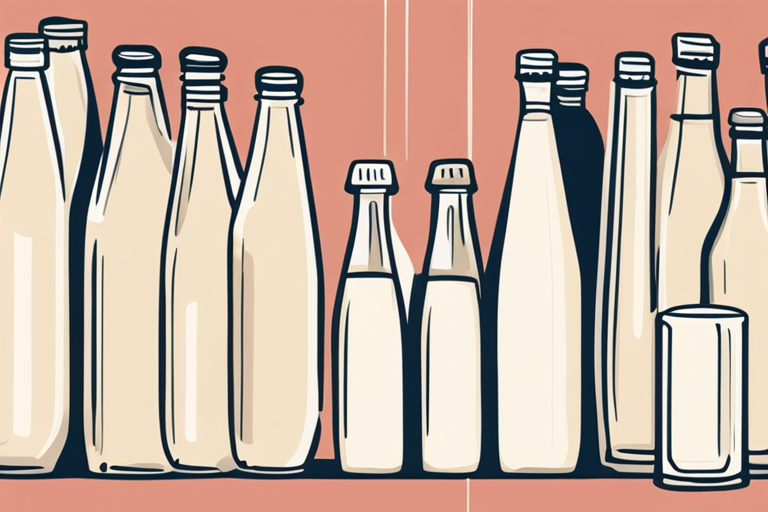
Does Nonfat Dry Milk Expire?
Get Your Free Food Safety Cheat Sheet
30 most common foods with instant answers. Print it and stick it on your fridge—completely free!
Does Nonfat Dry Milk Expire?
Nonfat dry milk, also known as powdered skim milk, is a convenient and versatile pantry staple that many people use for baking, cooking, and as a substitute for fresh milk. However, like any other food product, nonfat dry milk does have a shelf life. In this blog post, we will explore the topic of nonfat dry milk expiration, how to store it properly, and tips for ensuring food safety.
Understanding Nonfat Dry Milk Expiration
Nonfat dry milk does have an expiration date, but it is important to differentiate between the expiration date and the best-by date. Here's what you need to know:
Expiration Date vs. Best-By Date
-
Expiration Date: This is the date until which the product is expected to remain safe to consume. Consuming nonfat dry milk after the expiration date can pose risks to your health.
-
Best-By Date: This date indicates the period during which the product is at its peak quality in terms of flavor and texture. Consuming nonfat dry milk after the best-by date may not be harmful, but the quality may deteriorate.
Factors Affecting Nonfat Dry Milk Shelf Life
Several factors can influence the shelf life of nonfat dry milk. Understanding these factors can help you determine whether your powdered milk is still safe to consume:
Storage Conditions
Proper storage is crucial for extending the shelf life of nonfat dry milk. Here are some tips for storing powdered milk:
- Keep nonfat dry milk in a cool, dry place away from direct sunlight.
- Store it in an airtight container to prevent moisture from getting in.
- Avoid storing powdered milk near strong-smelling foods as it can absorb odors.
- Check the packaging for any specific storage instructions provided by the manufacturer.
Packaging
The type of packaging can also impact the shelf life of nonfat dry milk. Look for products that are sealed in airtight containers or vacuum-sealed pouches to ensure freshness.
Temperature Fluctuations
Fluctuations in temperature can accelerate the degradation of nonfat dry milk. Avoid storing powdered milk in areas where temperatures fluctuate significantly, such as near ovens or refrigerators.
Signs of Spoiled Nonfat Dry Milk
Even if nonfat dry milk is stored properly, it can still spoil over time. Here are some signs that your powdered milk may have gone bad:
Off Odor
If you detect a sour or rancid smell when opening the container of nonfat dry milk, it is likely spoiled and should be discarded.
Clumping or Discoloration
Spoiled powdered milk may clump together or develop an unusual color. If you notice any clumps or discoloration, it is best to dispose of the product.
Unpleasant Taste
Taste a small amount of reconstituted nonfat dry milk before using it in recipes. If it has a bitter or off taste, it is best to refrain from using it.
Conclusion
In conclusion, nonfat dry milk does have an expiration date, and it is important to store it properly to maximize its shelf life. By understanding the factors that can affect the quality of powdered milk and recognizing the signs of spoilage, you can ensure that your nonfat dry milk remains safe to consume. Remember to check the expiration or best-by date on the packaging and follow proper storage guidelines to enjoy the benefits of this pantry staple for an extended period.

Authoritative Food Safety References
These agencies and university labs inform every tip and health precaution we publish.
USDA FoodKeeper – Cold Storage Guidelines
Official refrigerator, freezer, and pantry timelines maintained by the U.S. Department of Agriculture.
Visit USDA FoodKeeperFDA Produce Safety Rule & Grower Guidance
Field-to-fridge handling practices that prevent contamination of fruits, vegetables, and leafy greens.
Visit FDA Produce SafetyCDC Foodborne Illness Prevention Hub
Surveillance-backed guidance on pathogens, symptoms, and steps to reduce foodborne illness risk.
Visit CDC Food SafetyUC Davis Postharvest Technology Center
University research detailing optimal storage atmospheres for produce after harvest.
Visit UC Davis PostharvestPenn State Extension – Home Food Preservation & Safety
Peer-reviewed extension bulletins on safe canning, chilling, and reheating practices.
Visit Penn State ExtensionCan nonfat dry milk go bad?
Can you use nonfat dry milk after the expiration date?
How should nonfat dry milk be stored?
Can nonfat dry milk be frozen for longer storage?
Get Your Free Food Safety Cheat Sheet
30 most common foods with instant answers. Print it and stick it on your fridge—completely free! Want more? Upgrade to the complete guide with 70+ foods.
Scan your food directly and get instant safety info using our AI-powered camera feature.